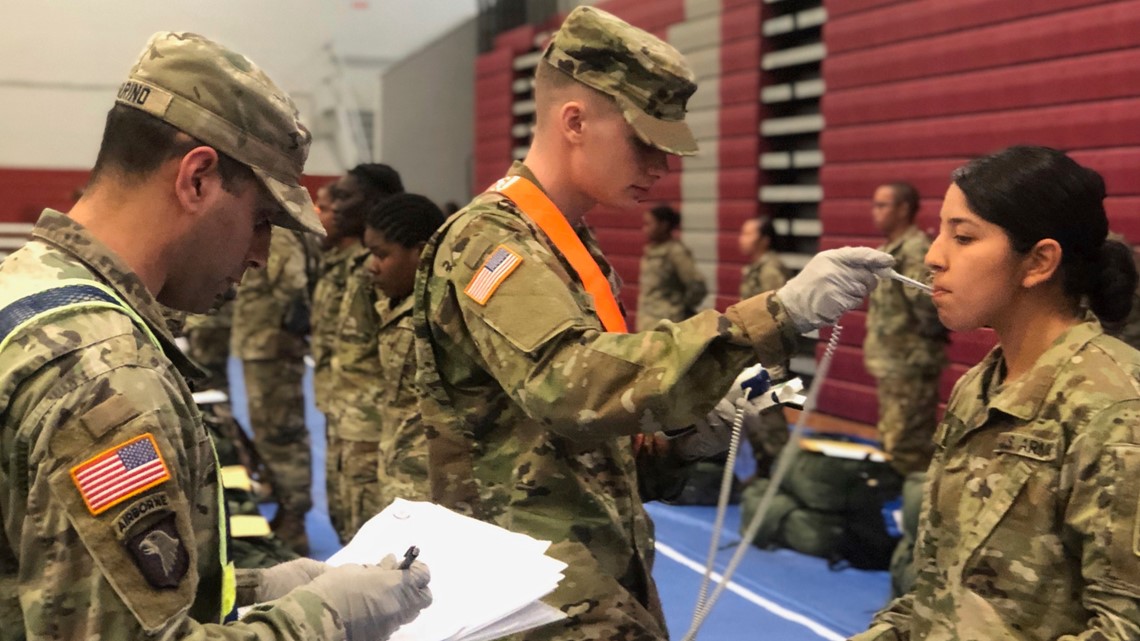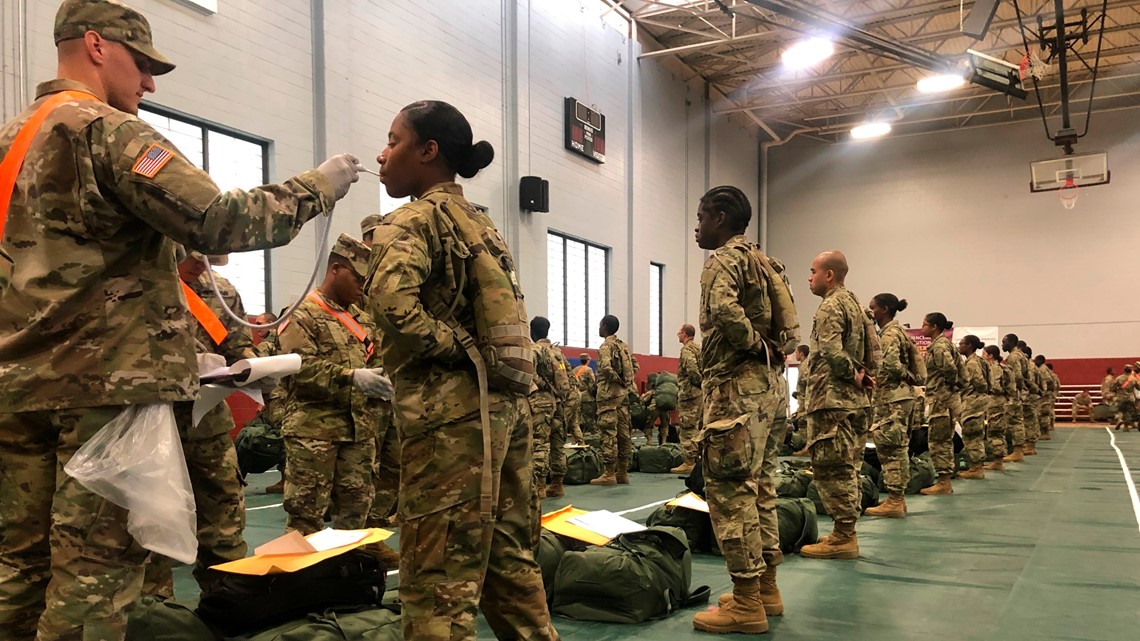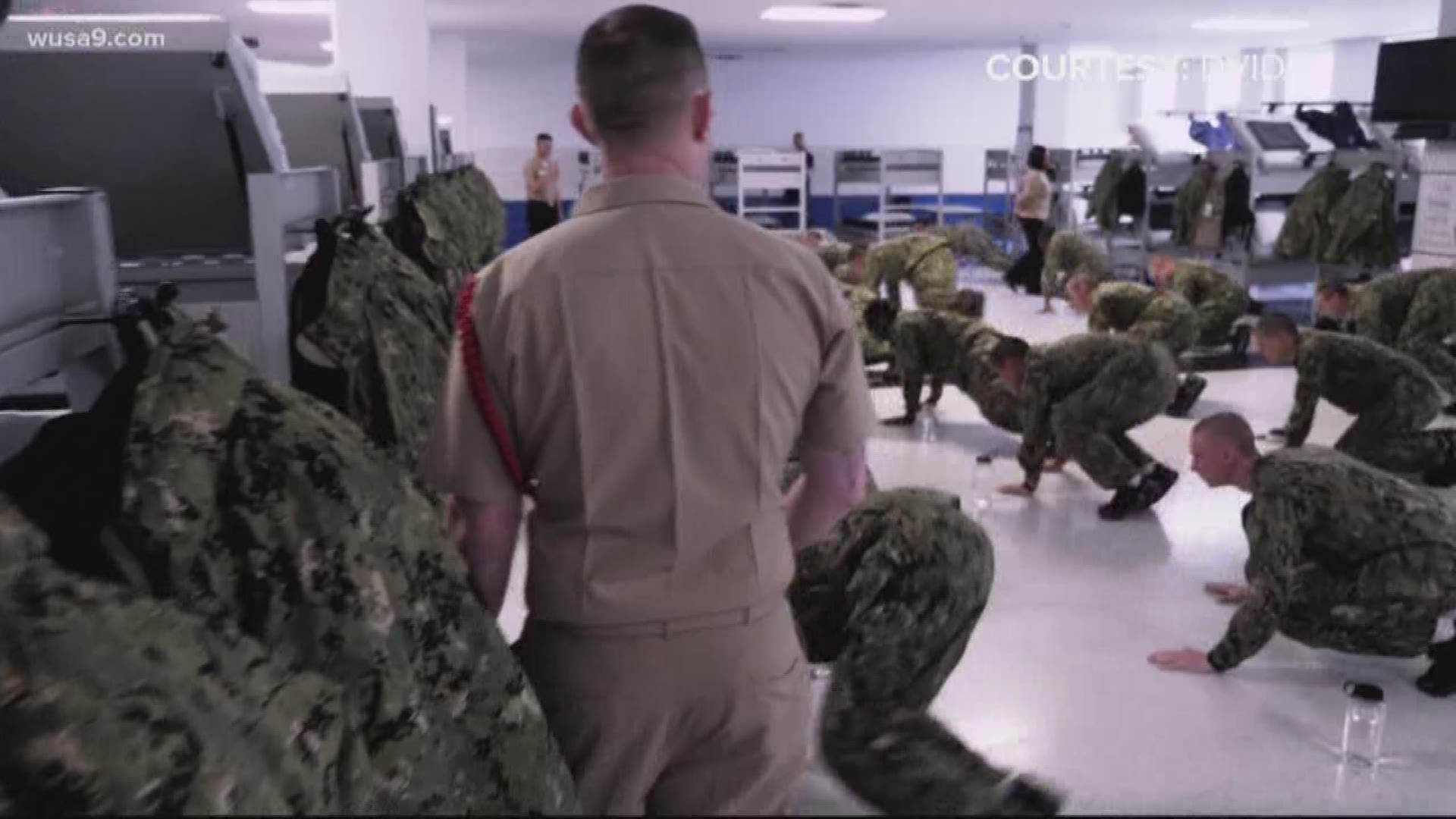WASHINGTON — With his Army recruiting office shuttered due to the coronavirus, Staff Sgt. Anthony Holt has had to be creative to meet his enlistment goals. Using social media is one way. Signing up the grocery delivery guy is another.
Holt asked the man how he ended up with the virtual shopping job. It turned out, he wanted to be a boat operator, but a job with an Alaskan cruise company fell through because of the pandemic.
The Army also has maritime jobs, Holt told him. He found an open training slot for an Army watercraft operator. The delivery guy enlisted.
“I talk to every single person that I meet no matter what, because I have no idea what their life story is," said Holt, who is based in Bowling Green, Kentucky. ”If I have the opportunity to help somebody the way that the Army’s helped me, I seize that opportunity.”
COVID-19 has had a dramatic impact on military recruiting, closing enlistment stations and forcing thousands of recruiters to woo potential soldiers online, or even on their front steps. As the virus raged, enlistments slowed and fueled worries that the armed services would have to rely more on current troops re-enlisting to meet total force requirements by the end of the fiscal year in September.
Recruiters have had to abandon their normal visits to high schools and malls, and instead are relying almost exclusively on social media to reach young people. As that effort builds, Army leaders believe it may evolve into a new system that will allow them to scale back the size and staffing at enlistment storefronts and reduce the number of recruiters.
“We’re going to empower the recruiters to allow for more autonomous recruiting,” said Maj. Gen. Frank Muth, head of the Army’s recruiting command. That, he said, will allow the service to reduce the size of brick-and-mortar offices since some recruiters will be working solely online and go into the office only occasionally.


“If we have recruiters that are operating at a greater efficiency (online) then we don’t need 10,000 recruiters. We may be able to reduce that number to 7,000 or 8,000,” he said, adding that such a reduction will allow the Army to move more soldiers back into regular units and fighting formations.
But first the Army has to determine how successful virtual recruiting can be.
In the early days of the pandemic, Army enlistments fell off by about 50%.
“Does that put us behind? Yeah,” said Muth, adding that enlistments are about 4,000 lower than their goal at this point, despite doing better than planned in the early part of the fiscal year, before the pandemic took hold. But, he said, online recruiting has improved. Over the past month the Army got about 80% of its goal, compared with the normal 90% for that period, Muth said.
Overall success will depend on soldiers like Sgt. 1st Class Eric Nordin, who is making virtual recruiting a career.
“I was a lot cooler online than I am in real life,” said Nordin, who started as a regular recruiter in La Grange, Kentucky, but is now commander of Nashville’s virtual recruiting station. “I’m not saying I didn’t enjoy going out to the malls and asking individuals if they wanted to recruit. But, I was more successful sending them a DM (direct message) or posting stuff about myself.”
Nordin and Holt said the Army has done training sessions to teach recruiters how to get more followers on Facebook and Instagram. Often, they said, recruiters can reach out to soldiers they’ve enlisted in the past and ask them to share posts, expanding the views of their online messages.
As part of the new, creative methods, Muth said he took an idea from McDonald's. A few years ago the fast-food juggernaut said it would hire 50,000 people in one day. Muth said he decided the Army could try the same thing.
So, on Tuesday, Muth is launching “Army Hiring Days” and is calling on all service leaders at all levels to fill social media with recruiting messages. The goal is to bring in 10,000 recruits, and top leaders have already started turning to Twitter to tout soldier life.
“Army National Hiring Days coming June 30-July 2! The U.S. Army’s first-ever nationwide virtual hiring campaign is a three-day event with a goal of finding 10,000 men and women to join our team,” tweeted Gen. James McConville, the top Army officer.


Cash will be one of the incentives.
Qualified recruits who enlist during the three-day event — www.goarmy.com/hiringdays — could qualify for a $2,000 bonus. That will be on top of other incentives the Army offers for recruits who score high or enlist for some of the more critical jobs. For example, recruits who sign up as linguists, psychological operations specialists, special forces or intelligence collectors could get up to $40,000 in bonuses over their initial enlistment.
High-demand jobs that qualify for smaller bonuses include infantry, missile defense and fire control specialists.
Crippling unemployment caused by the pandemic may help the Army’s recruiting. When unemployment is low, there’s a lot of competition for young people getting out of high school or college. But when it goes higher than 6% — it’s now over 13% — the military becomes a more enticing option. Muth said he doesn't yet have data to determine the impact of this latest unemployment surge.
Nordin said he’s seen some success over the past month. And a key message he’s sending is that the Army is hiring. He said he describes the 30 days of paid vacation, money for college and other benefits.
And as for the Kroger delivery guy? He left for Army basic training on June 1.
“It just so happened that he was affected by the virus and I was able to help him,” Holt said. “It felt awesome.”

